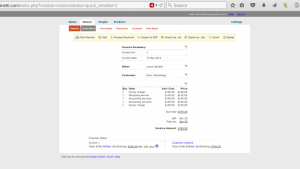— January 5, 2018

Alexandra_Koch / Pixabay
In 2011, Google rocked the online world with its first Panda algorithm update. For the first time, webmasters were being hit with search penalties for breaking Google’s guidelines and 12% of all searches were affected by the update.
Panda marked the beginning of Google’s war against web spam and black-hat SEO – a battle that the search giant has more or less won by now. In 2016, Google announced that Panda had become part of its core search algorithm rather than a separate part of Google’s wider search algo.
Which means we won’t see any more Panda-specific updates in the future. So how relevant is Google’s most infamous algorithm update in 2018?
What is the Panda algorithm?
Google’s Panda updates targeted low-quality content, pages and sites. Unlike Penguin, which focused on dodgy link building practices, Panda targeted a wide range of factors that negatively impact page content, navigation and Google’s own search results:
- Keyword stuffing: Forcing or hiding keywords within content in order to boost search ranking.
- Thin content: Not enough content on a specific page to be useful.
- Irrelevant content: Content that doesn’t match the keywords, titles and other elements you optimise for.
- Broken links: Links that don’t take users to the promised location.
- On-site duplicate content: Duplicate or similar content across your pages.
- Off-site duplicate content: Duplicate or similar content compared to pages on other sites.
- Deceptive content: Content designed to deceive users – for example, making ads look like regular content in order to generate more clicks.
- Content farms: Sites that produce large volumes of content purely for SEO purposes.
- Broad topics: Sites without a topical focus, often covering too many topics that aren’t tightly themed or relevant to each other.
- Machine-generated content: Low-quality content generated by software.
- Poor spelling and grammar: Errors that make content hard to read or understand.
- Non-optimised pages: Pages that simply aren’t optimised for search at all.
Panda’s impact was huge and the likes of Wikipedia and eBay were among the big names to get hit hard by successive Panda algorithms over the intervening years. By 2014, the algorithm had evolved to also target affiliate marketing sites that are short on useful information and doorway pages targeting hundreds of keywords using the same copy.
Then, in 2016, Google told us that Panda was now part of its core search algorithm, adding that we shouldn’t expect to hear algorithm updates announced in the future.
What does Panda mean for SEO in 2018?
Essentially, there is no separate Panda algorithm anymore and there won’t be any standalone updates. The algorithm will continue to be tweaked over time but it’ll be part of Google’s ongoing process of refining its core algorithm.
Google says it integrated Panda into its core algorithm because it doesn’t expect to make major changes to it anymore.
“It is less about the functionality, which means it probably doesn’t change that much over time, and it is more about how we perceive it, in the context of the algorithm. Do we still think this is an experimental thing, it is running for a while and we aren’t sure how long it will last? Or is it like PageRank, it is part of it, it will always be there, at least in the foreseeable future and then probably call it in certain context part of the core algorithm.” – Andrey Lipattsev, Google search quality senior strategist
This tells us that, while future Panda changes won’t have the kind of impact we saw between 2011-2015, the search factors it targets will continue to be just as important. In other words, Google is happy with how Panda assesses content quality and the same rules are going to apply from here on in.
Panda might be less visible than it was a few years ago, but it’s as relevant in 2018 as it ever has been.
Optimising for Panda in 2018
The good news about Panda becoming part of Google’s core algorithm is that the optimisation process shouldn’t change all that much in the years ahead. Of course, we don’t know for sure which specific factors Panda targets, but we’ve got a pretty good idea of how to keep this section of Google’s algorithm happy.
There are five key areas to focus on:
1. Content quality
Make sure every page and piece of content you publish doesn’t fall under these categories:
- Thin content
- Irrelevant content
- Duplicate content
- Spun or auto-generated content
2. User signals
These user signals tell Google your pages aren’t providing the quality content users demand:
- High bounce rates
- Low click-through rates
- Low time on site
- Low percentage of returning visitors
3. User experience
Panda also targets a number of signals that point to a poor user experience on your pages or when navigating through content on your site:
- Designs/layouts that break UX conventions (particularly those that resemble spam sites)
- Site speed
- Poor navigation
- Mobile redirects
- Redirects to another domain
- 404 errors
- Too many ads
- Too many affiliate links
4. Trustworthiness
Trustworthiness isn’t something Google can definitively measure but there are a few signals Panda can pick up on:
- HTTPS secure encryption
- Providing contact information
- Having a privacy policy, terms and conditions
- Low ad ratio
- No spelling or grammar mistakes
5. Over optimisation
This brings us back to the black-hat techniques Google targeted with its first Panda algorithm update:
- Keyword stuffing
- Hidden text
- Cloaking
- Internal link stuffing
The important thing to understand about these five areas of Panda optimisation is they’re as much about the user as they are the algorithm itself. Google might not use testimonials as a ranking factor, for example, but using them might keep people on your site for longer and increase conversion rates – two things Panda does want to see.
This is where content quality and user experience overlap; because quality content is at the heart of all great experiences. The best approach to optimising for Panda is to focus on providing the best possible experience for users – starting with the content you provide them. Anything that doesn’t provide value to the end user shouldn’t be published and anything that makes your content more difficult to access or navigate will likely hurt your search ranking.
Need help with your content?
We have an amazing team of content marketers in-house who can create a regular supply of inspiring content for you. To find out more, drop us your details and we’ll give you a call.
Digital & Social Articles on Business 2 Community
(68)






